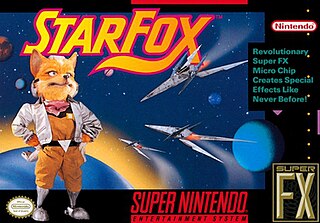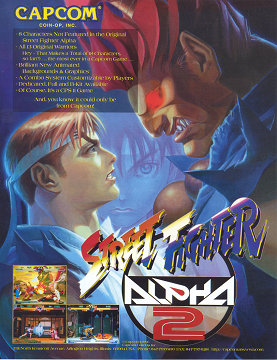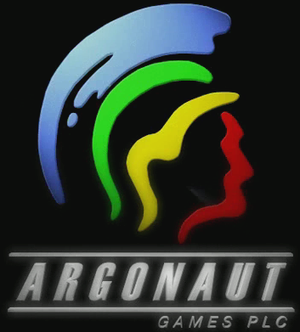
The PC-FX is a 32-bit home video game console co-developed by NEC and Hudson Soft. Released in December 1994, it is based on the NEC V810 CPU and CD-ROM, and was intended as the successor to the PC Engine. Unlike its predecessor, the PC-FX was only released in Japan.

Virtua Fighter is a fighting video game developed and published by Sega for arcades. It was developed for the Sega Model 1 arcade platform by AM2, a development group within Sega headed by Yu Suzuki. An early prototype version was location tested in Japan by August 1993, before the complete game was released worldwide in December 1993. It was the first arcade fighting game to feature fully 3D polygon graphics. The game was ported to Sega Saturn as a global launch title in 1994 and 1995, and also received a port to the Sega 32X.

Rise of the Robots is a fighting game released by Time Warner Interactive in 1994. Originally developed for the Amiga and DOS by Mirage's Instinct Design, it was ported to various video game consoles, including the Super NES, the Mega Drive, and the 3DO Interactive Multiplayer. The game includes a single-player mode in which the player assumes the role of the ECO35-2 Cyborg as he attempts to stop the Supervisor, who has taken over Electrocorp's facilities in Metropolis 4, and a two-player mode in which the second player controls a character chosen from among ECO35-2's enemies.

Virtua Cop is a 1994 light gun shooter video game developed and published by Sega for arcades. It was developed for the Sega Model 2 system, and was ported to the Sega Saturn in 1995 and Windows as Virtua Squad in 1996. The Saturn version included support for both the Virtua Gun and Saturn mouse, as well as a new "Training Mode" which consists of a randomly generated shooting gallery.

Yu Suzuki is a Japanese game designer, producer, programmer, and engineer, who headed Sega's AM2 team for 18 years. Considered one of the first auteurs of video games, he has been responsible for a number of Sega's arcade hits, including three-dimensional sprite-scaling games that used "taikan" motion simulator arcade cabinets, such as Hang-On, Space Harrier, Out Run and After Burner, and pioneering polygonal 3D games such as Virtua Racing and Virtua Fighter, which are some of the games besides others from rival companies during that era credited with popularizing 3D graphics in video games; as well as the critically acclaimed Shenmue series. As a hardware engineer, he led the development of various arcade system boards, including the Sega Space Harrier, Model 1, Model 2 and Model 3, and was involved in the technical development of the Dreamcast console and its corresponding NAOMI arcade hardware.
In the history of video games, the fourth generation of video game consoles, more commonly referred to as the 16-bit era, began on October 30, 1987, with the Japanese release of NEC Home Electronics' PC Engine. Though NEC released the first console of this era, sales were mostly dominated by the rivalry between Sega and Nintendo across most markets: the Sega Mega Drive and the Super Nintendo Entertainment System. Cartridge-based handheld game consoles became prominent during this time, such as the Nintendo Game Boy, Atari Lynx, Sega Game Gear and TurboExpress.
The fifth generation era refers to computer and video games, video game consoles, and handheld gaming consoles dating from approximately October 4, 1993, to March 23, 2006. The best-selling home console was the Sony PlayStation, followed by the Nintendo 64, Sega Saturn, and Atari Jaguar. The PlayStation also had a redesigned version, the PSone, which was launched on July 7, 2000.

Star Fox, known as Starwing in PAL regions, is a 1993 rail shooter game inspired by Star Wars developed by Nintendo and Argonaut Software, and published by Nintendo for the Super Nintendo Entertainment System. The first entry in the Star Fox series, the story follows Fox McCloud and the rest of the Star Fox team defending their homeworld of Corneria against the invading forces of Andross.

Street Fighter Alpha 2, known as Street Fighter Zero 2 in Japan, Asia, South America, and Oceania, is a 1996 fighting game developed and published by Capcom for arcades. The game is a remake of the previous year's Street Fighter Alpha: Warriors' Dreams and features a number of improvements, such as new attacks, stages, endings, and gameplay features. It was ported to the PlayStation, Sega Saturn and Super Nintendo home consoles globally in 1996, and later a Windows port. It was followed by Street Fighter Alpha 3 in 1998.

Star Fox 2 is a rail shooter game developed by Nintendo and Argonaut Software and published by Nintendo for the Super Nintendo Entertainment System (SNES). It was completed in 1995 but did not see an official release until 2017 on the Super NES Classic Edition.

Argonaut Games is a British video game developer founded in 1982. It was known for the Super NES video game Star Fox and its supporting Super FX chip, and for Croc: Legend of the Gobbos and the Starglider series. The company was liquidated in late 2004, and ceased to exist in early 2007. It was relaunched in 2024.

The Super FX is a coprocessor on the Graphics Support Unit (GSU) added to select Super Nintendo Entertainment System (SNES) video game cartridges, primarily to facilitate advanced 2D and 3D graphics. The Super FX chip was designed by Argonaut Games, who also co-developed the 3D space rail shooter video game Star Fox with Nintendo to demonstrate the additional polygon rendering capabilities that the chip had introduced to the SNES.

Virtua Racing or V.R. for short, is a Formula One racing video game developed by Sega AM2 and released for arcades in 1992. Virtua Racing was initially a proof-of-concept application for exercising a new 3D graphics platform under development, the "Model 1". The results were so encouraging that Virtua Racing was fully developed into a standalone arcade title.

Stunt Race FX, known in Japan as Wild Trax, is a racing video game developed by Nintendo and Argonaut Software and published by Nintendo for the Super Nintendo Entertainment System. It is the second game to use the 3D-centric Super FX powered GSU-1.

War Gods is a 3D fighting video game originally released to arcades by Midway Games in 1996. Ports for the Nintendo 64, PlayStation and Windows were released in 1997. In the game, players control one of ten fighters who have been given great power by a mysterious ore that crashed-landed on Earth from outer space. The object of the game is to defeat all the other fighters to become the most powerful warrior on the planet.

Virtua Fighter 2 is a 1994 fighting video game developed and published by Sega for arcades. It is the second game in the Virtua Fighter series and the sequel to Virtua Fighter (1993). Created by Sega's Yu Suzuki-headed AM2 team, it was designed on the purpose-made Sega Model 2 hardware which provided a significant upgrade in graphical capabilities. Following its release on the arcades, Virtua Fighter 2 was ported to the Sega Saturn home console in November 1995, while ports for some other platforms appeared later.

Virtua Fighter is a series of fighting games created by Sega AM2 and designer Yu Suzuki. The original Virtua Fighter was released in December 1993 and has received four main sequels and several spin-offs. The highly influential first Virtua Fighter game is widely recognized as the first 3D fighting game released.

Vortex is a 3D shooter game developed by Argonaut Software and released by Electro Brain for the Super Nintendo Entertainment System in September 1994. Titled Citadel during development, it is one of a few games designed to use the enhanced graphics of the Super FX powered GSU-1.
The 1990s was the third decade in the industry's history. It was a decade of marked innovation in video gaming. It was a decade of transition from sprite-based graphics to full-fledged 3D graphics and it gave rise to several genres of video games including, but not limited to, the first-person shooter, real-time strategy, survival horror, and MMO. Arcade games, although still very popular in the early 1990s, began to decline as home consoles became more common. The fourth and fifth generation of video game consoles went on sale, including the Sega Genesis, Super Nintendo, Sega Saturn, PlayStation, Nintendo 64, Game Boy Color and the Sega Dreamcast. Notable games released in the 1990s included Super Mario World, Sonic the Hedgehog, Street Fighter II, Mortal Kombat, Tekken 3,Doom, Wolfenstein 3D, Quake, Duke Nukem 3D, Final Fantasy VII, Unreal Tournament, Star Fox, Half-Life, Grand Theft Auto, Super Mario 64, Pokémon Red and Blue, NBA Jam,Daytona USA, GoldenEye 007, System Shock 2, Civilization,Ridge Racer, Sonic Adventure, Gran Turismo, Super Mario Kart, Pokémon Gold and Silver,Castlevania: Symphony of the Night, Super Metroid, Silent Hill, Dead or Alive 2, The Legend of Zelda: Ocarina of Time, Crash Bandicoot, Spyro The Dragon, Fallout, Metal Gear Solid, Diablo, Virtua Fighter, Tomb Raider,Sega Rally Championship, Wing Commander,Super Smash Bros, Secret of Mana,Thief: The Dark Project, Age of Empires, Nights into Dreams, Panzer Dragoon, Gunstar Heroes, EverQuest, Chrono Trigger, Battletoads, Worms, Myst, Micro Machines, Streets of Rage 2,Baldur's Gate,Donkey Kong Country, Wipeout, The Legend of Zelda: A Link to the Past, Super Mario Land 2: 6 Golden Coins,Lemmings, EarthBound, StarCraft, Banjo-Kazooie, PaRappa the Rapper, Resident Evil, Tony Hawk's Pro Skater, Soulcalibur, Command & Conquer, and Dance Dance Revolution.

Winter Gold is a 1996 winter sports video game developed by Funcom and published by Nintendo for the Super Nintendo Entertainment System. In the game, players participate in six winter sports disciplines across four distinct olympic venues. Its gameplay focuses on time trials in three playable modes, using a main five-button configuration. The 3D visuals are powered by the Super FX2 chip, an enhancement of Argonaut Software's Super FX processor previously used in Doom and Yoshi's Island.


















